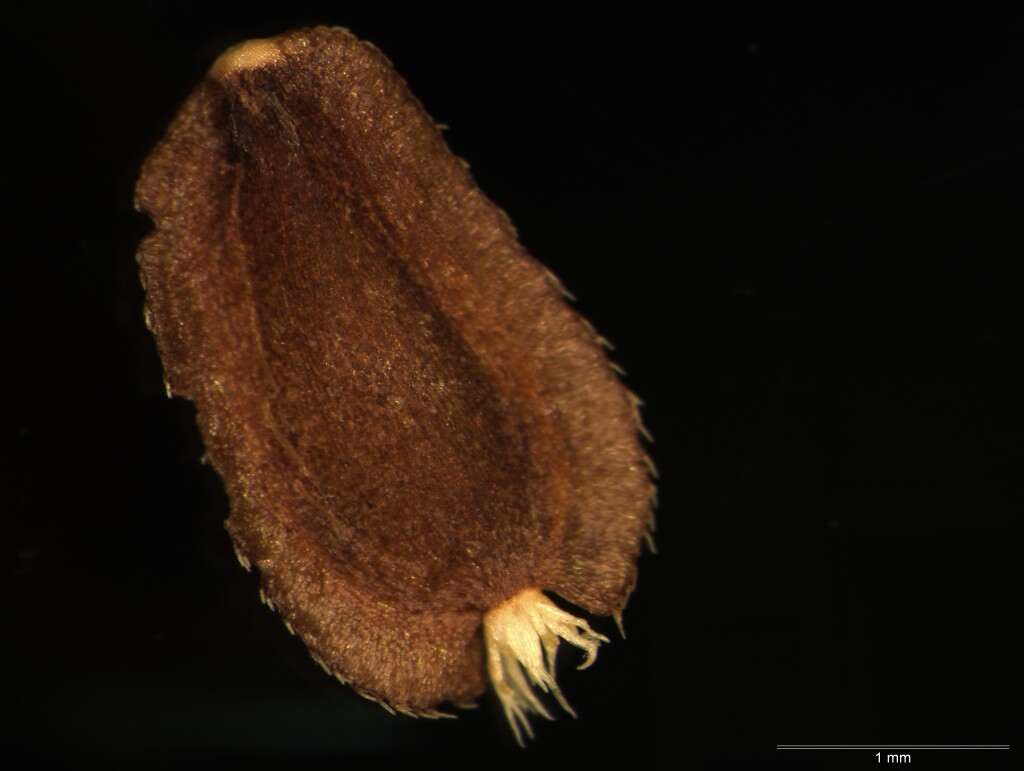Brachyscome spathulata
Gaudich.Ascending to erect herb, branched mostly from base, to c. 60 cm high. Leaves mostly rosetted at base, but some cauline, hairs sparse to dense, glandular; basal leaves spathulate to oblanceolate, 1.7–11 cm long, 6–30 mm wide, teeth or lobes somewhat rounded, 4–19; upper leaves often entire and narrowly elliptic, lanceolate or oblanceolate. Flowering branches glandular-hairy; bracts c. 20–30, c. 1-seriate, c. equal, narrowly elliptic or oblanceolate, 6–9 mm long, 1–1.7 mm wide, narrowly acute to attenuate, glandular-hairy, mainly green and herbaceous but with scarious margins and apex, the apex often purplish; ligules 10–16 mm long, mauve or blue. Cypselas obovate, 2.2–5 mm long, 1.1–2.5 mm wide, brown; lateral faces with or without scattered tubercles terminating in eglandular curved hairs, some glandular hairs may be present; wing-like margins entire or slightly dissected, with short, curved eglandular hairs; pappus c. 0.3–0.5 mm high, inserted in apical notch.
GipP, OtP, CVU, GGr, NIS, EGL, EGU, WPro, HSF, HNF, Strz, MonT, HFE, VAlp. EGL, GipP, GGr, HNF, HSF, NIS, MonT, SnM, EGU, VAlp.; also NSW, ACT, Tas. Mostly in subalpine and alpine woodland, heathland and grassland, often in rocky areas, rare in lowlands (e.g. Grampians, Mornington Peninsula, Cape Conran, Mallacoota areas) where often associated with heathy woodland on granitic soils.
Brachyscome spathulata subsp. glabra (DC.) Stace has been treated as a separate entity confined to Tasmania, but Short (2014) includes this in a unitary B. spathulata.
 Spinning
SpinningShort, P.S. (2014). A taxonomic review of Brachyscome Cass. s.lat. (Asteraceae: Astereae).. Journal of the Adelaide Botanic Gardens 28: 1–219.

